
The Fembo House (Fembo-Haus / Fembohaus) is the only large merchant's house of the Late Renaissance preserved in Nuremberg, in the walls of which the Nuremberg City Museum (Stadtmuseum) is now located / Stadtmuseum).
The "Fembo House" was built in the period from 1591 to 1596, presumably according to the plan of Jacob Wolf the Elder on behalf of the Dutch merchant Philip van Oerl, on the site of a previously existing building.
The new house in Nuremberg became the residence of Philip van Oerl and his descendants, as well as the headquarters of the trading company founded by him.
During its history, the house has changed several owners who have made their own changes to the interior of the building. The exterior of the house did not change.
In the 17th century, the patrician Christoph Jacob Boeheim transformed the building into a magnificent residential palace. In the 18th and 19th centuries, the Homännian cartographic bureau was located in the walls of the house. Then the antiquarian and bookseller Georg Christoph Franz Fembo bought the house. On behalf of the owner, the house acquired its name.
In 1928, the house became the property of the city of Nuremberg and has served as a museum since 1953.
The facade building survived the Second World War with only minor damage.
Today, the Fembo house with a front building with an outbuilding and rear buildings around the courtyard is the only representative former residential complex of Nuremberg, which was practically not damaged during the Second World War.
The representative and most impressive facade of the building faces south. The entrance portal is dominated by a sandstone bay window, which dates back to 1680. The sloping stepped pediment is richly decorated with scrolls, obelisks and flower vases. The windows of the pediment are emphasized by columns and bas-relief parapets with allegorical images. In the lower right part of the pediment you can see the image of a sundial.
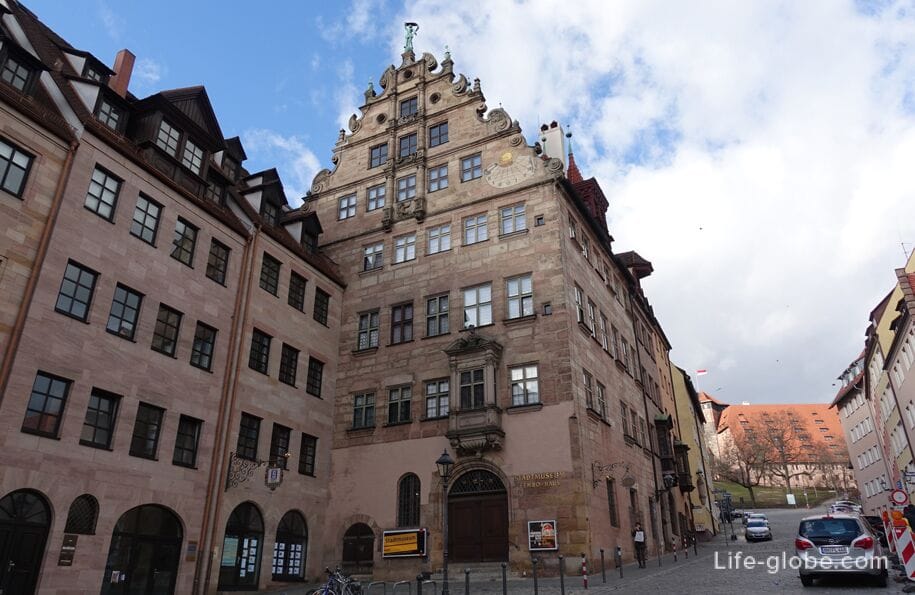
The very top of the gable of the house is decorated with a bronze figure of Fortune - the crown of glory, which was installed on the house by its first owner.
It is not by chance that the merchant stopped at the motive of balancing Fortune on the ball. At the end of the 15th and during the 16th centuries, Fortune was very popular as the goddess of luck, especially among merchants who often transported their goods by sea. With a sail in his hand - depicting a banner, Fortune symbolizes unpredictable winds in the open sea. Balancing the ball hints at the case. However, a good merchant safely leads his ship to port, despite unexpected storms. With wise caution, he uses the opportunities that Fortune offers him. You can say: "He is the creator of his luck."
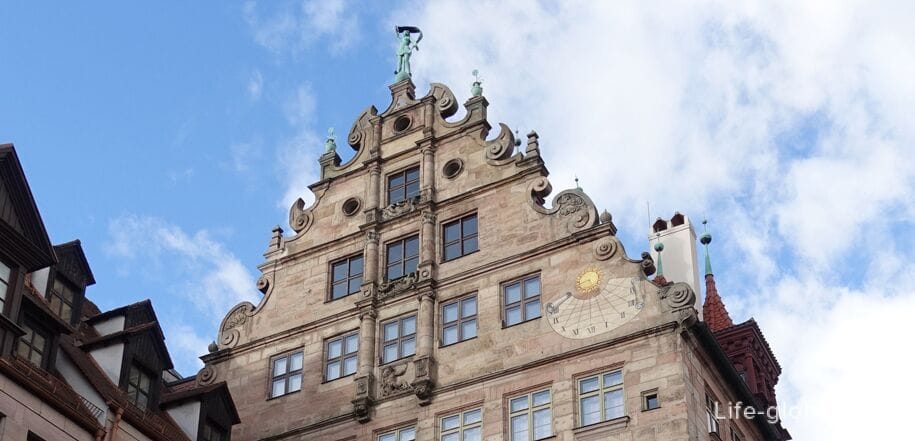
Nuremberg City Museum
Today, the Fembo House houses the Nuremberg City Museum (Stadtmuseum Fembohaus).
Inscription on the house, entrance to the museum
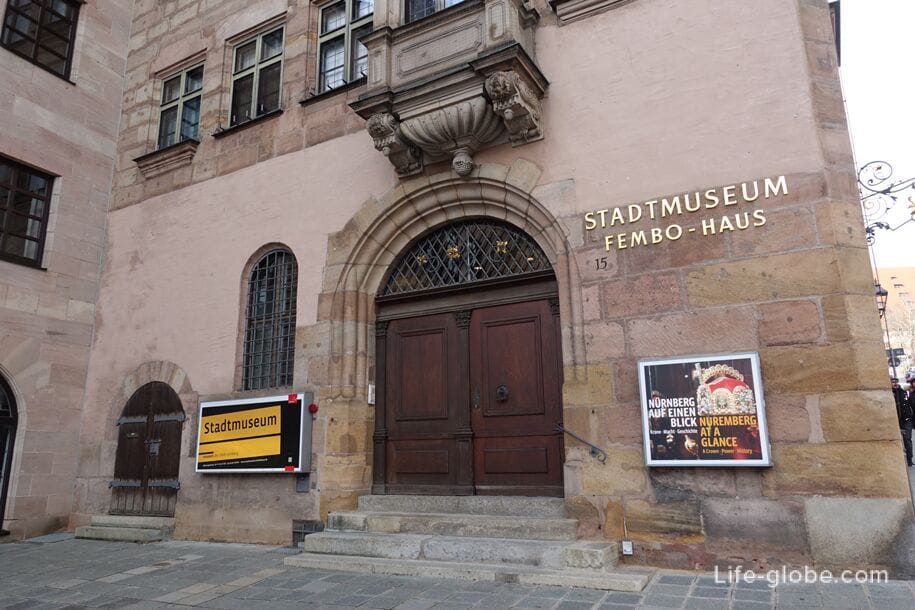
The museum presents the 950-year-old history and culture of Nuremberg, including thanks to the valuable original rooms and halls of the Fembo House itself and the historical courtyard.
In the museum you can see documentaries on the history of Nuremberg; layout and models of the city; maps; products of Nuremberg artisans; a collection of furniture from the 17th - 19th centuries; a unique cast fountain of Apollo of the Renaissance, cast according to the project of Peter Fletner in 1532; a stucco ceiling in the Baroque style, which was preserved and created in 1674 by the Italian stucco master Carlo Moretti Brentano, etc.
The museum also hosts temporary (rotating) exhibitions.
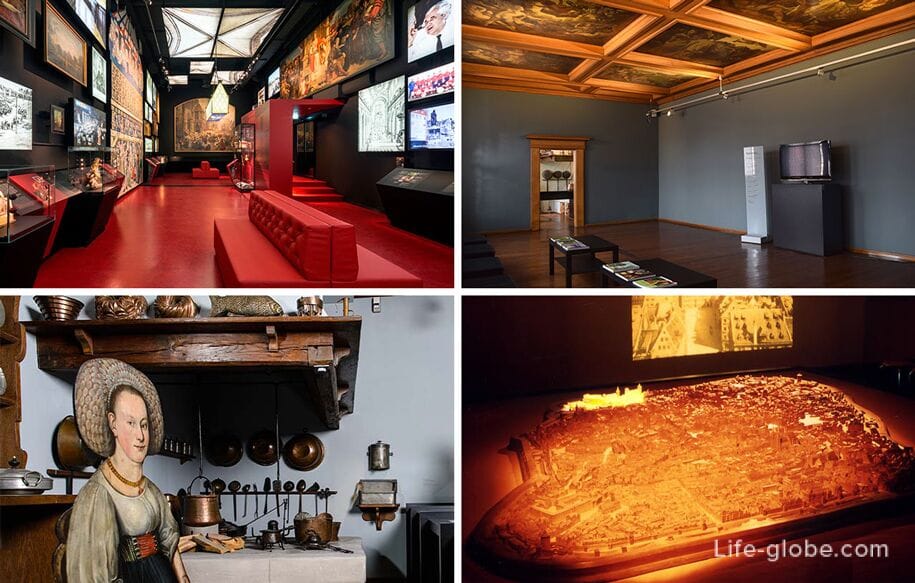
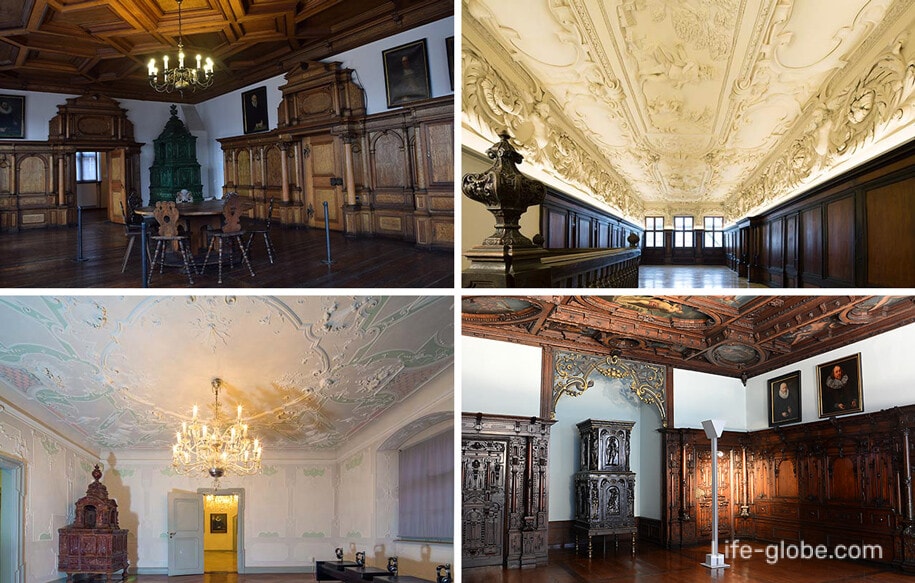
The Furbohaus is located in the historic old town of Nuremberg, on the north side of the Pegnitz River, near such important places and attractions of the city as: central Market Square (Hauptmarkt), Nuremberg Town Hall (Nürnberger Rathaus), St. Sebald's Church (Sebalduskirche) and Nuremberg Fortress (Kaiserburg Nürnberg).
The address of the Fembo House and the Nuremberg City Museum is 15 Bergstrasse (Burgstraße).
Museum website: fembohaus.
All accommodation facilities in Nuremberg, including in the city center and near the Fembo house, can be viewed and booked here